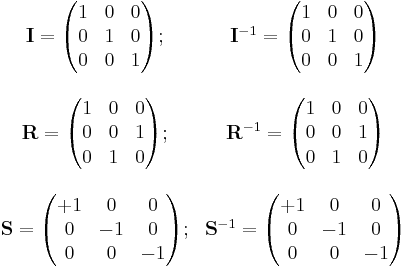Involutory matrix
In mathematics, an involutory matrix is a matrix that is its own inverse. That is, matrix A is an involution if and only if A2 = I. One of the three classes of elementary matrix is involutory, namely the row-interchange elementary matrix. A special case of another class of elementary matrix, that which represents multiplication of a row or column by −1, is also involutory; it is in fact a trivial example of a signature matrix, all of which are involutory.
Involutory matrices are all square roots of the identity matrix. This is simply a consequence of the fact that any nonsingular matrix multiplied by its inverse is the identity. If A is an n × n matrix, then A is involutory if and only if ½(A + I) is idempotent.
An involutory matrix which is also symmetric is an orthogonal matrix, and thus represents an isometry (a linear transformation which preserves Euclidean distance). A reflection matrix is an example of an involutory matrix.
Clearly, any block-diagonal matrices constructed from involutory matrices will also be involutory, as a consequence of the linear independence of the blocks.
Examples
Some simple examples of involutory matrices are shown below.
where
- I is the identity matrix (which is trivially involutory);
- R is a matrix with a pair of interchanged rows;
- S is a signature matrix.
An interesting general condition exists, for 2 × 2 matrices, where any matrix that may be written in the form A or AT below:
is involutory.
For example, for a matrix M of this form, where we set a = 1, b = 1, we have


